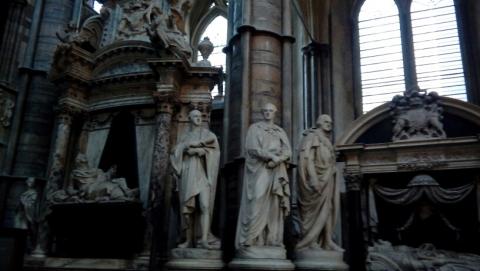Charles Worsley: St James’ Palace & Westminster Abbey

I had occasion today to visit the places of Charles Worsley’s death and burial. Worsley was the military officer Cromwell had placed in charge of Lancashire, along with Cheshire and Staffordshire, whose job was to suppress resistance to the government and enforce puritan morality on the people. In June 1656, Cromwell called a meeting of his Major Generals. Worsley attended, but was unwell, already weakened by the diligence with which he discharged his huge responsibility. On 12thof that month, he died at St James’ Palace in London, Secretary Thurloe considering it “a very great loss” to the nation and its Protector. The palace is not open to visitors; it is still the home of several royals such as Princess Anne, being still the official home of the monarchy even though Her Majesty resides elsewhere. Still, one can still see the Tudor architecture of its gatehouse, one of the last images Worsley would have seen before the gates of heaven.
The next day he was buried at Westminster Abbey with great pomp. There is some irony that a great evangelical congregationalist should be entombed in this place of royalty and latent Catholicism. This wasn’t lost on Charles II’s Restoration government who had Cromwell, also buried in the abbey in the Henry VII Chapel, dug up and hanged posthumously. Worsley avoided this indignity as it would seem no-one bothered to register the burial. Nevertheless, someone recorded the fee paid for the internment. Whether he was buried at the far end with Cromwell, and the grave-disturbers, not knowing his identity, left him alone, one cannot say. He may have been buried elsewhere in the chapel. A grave was discovered by the Victorian Dean Stanley (1864-1881) whilst searching for the corpse of James I. He described this unidentified corpse as being of a man over six feet tall and not yet having reached middle-age. Worsley was 33 when he died. No-one seems to have kept a record of where this internment was, and there’s no marker to this day, though one for Cromwell has since been added.
Westminster Abbey, though charmingly splendid, and subject to a silly no-photography rule, is like a big store room of graves, tombs and memorials, all jostling for attention. The place is cluttered, and surprisingly, individuals are there immortalised such as the godless Charles Darwen. Yet somewhere, among the dusty sepulchres, lies our Charles, unmarked and forgotten, but anticipating the trumpet’s final blast.

- Log in to post comments


 Sunday Worship 10.45am & 6.00pm
Sunday Worship 10.45am & 6.00pm